Dior, diamonds and Duncan Grant – the passions of Kim Jones
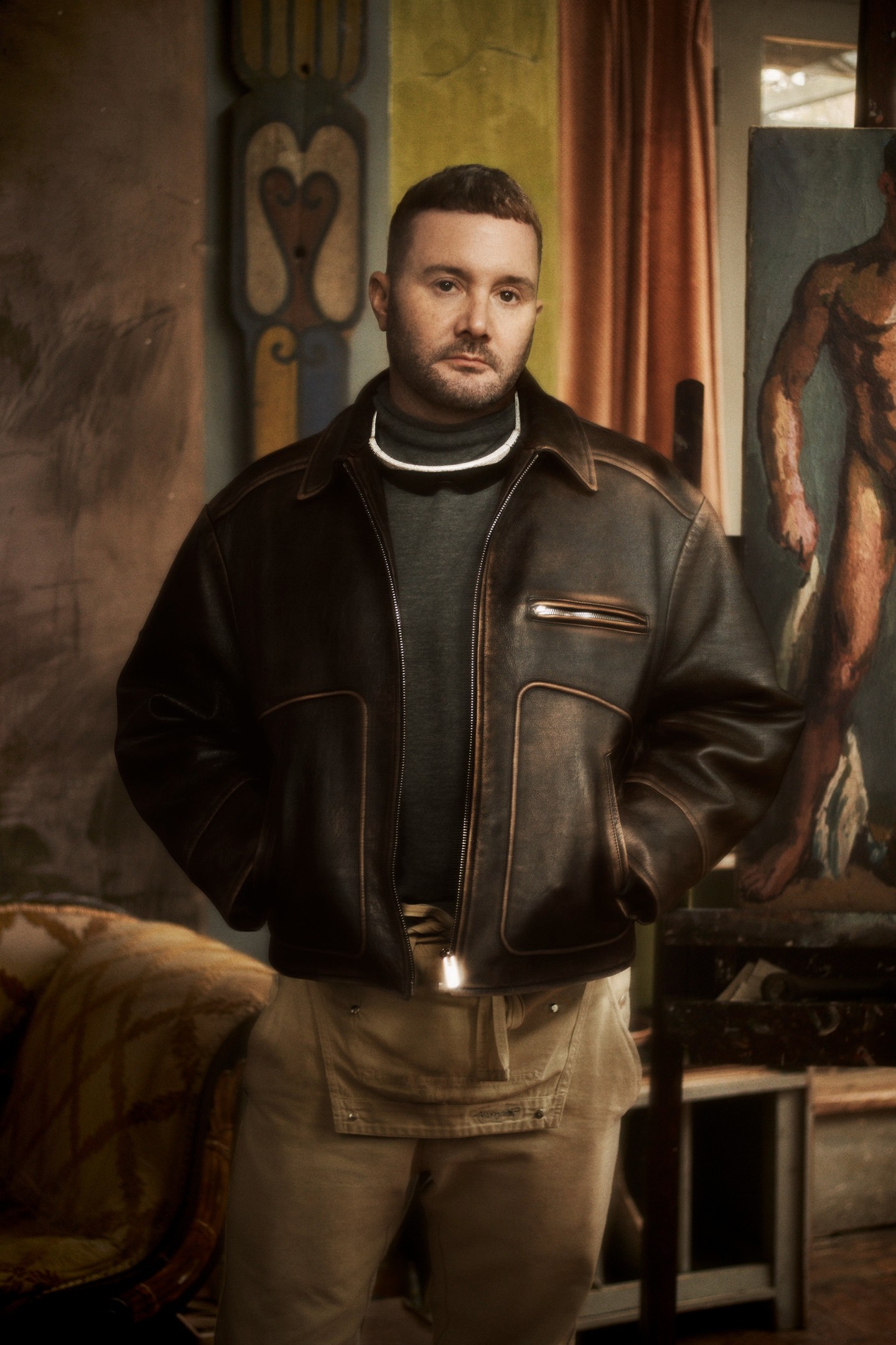
Simply sign up to the Style myFT Digest -- delivered directly to your inbox.
Kim Jones moves along his bookshelves in a kind of reverential awe. The 43-year-old designer, better known as the artistic director of Dior Men and Fendi womenswear and couture, is standing in the library of his west London home, a brutalist bunker he has lived in for four years. Scrolling along the floor-to-ceiling bookcases, which were designed based on a sketch by Jean Prouvé, he pulls out treasure after treasure from the shelves. Here, a first edition of Virginia Woolf’s Orlando. And another. And another. And another. There are seven. He shows me the edition sent to Vita Sackville-West, to whom the book was dedicated by her then lover. Accompanied by a black-and-white portrait of Woolf in her most radiant early 20s, it is inscribed with a cursory “Vita from Virginia” on the inner sleeve.
There are other favourites: Twelve Original Woodcuts, by Roger Fry, published by the Hogarth Press in 1921; a copy of To the Lighthouse, a publisher’s proof; as well as the letter to TS Eliot in which Woolf outlined the writing of Mrs Dalloway. He uses gloves for only the rarest of editions. “People don’t realise, you can be pretty rough with books,” he says. He turns over a first edition of The Waves, signed by Woolf to her secretary. “I love holding something that has touched the writer’s hand.”
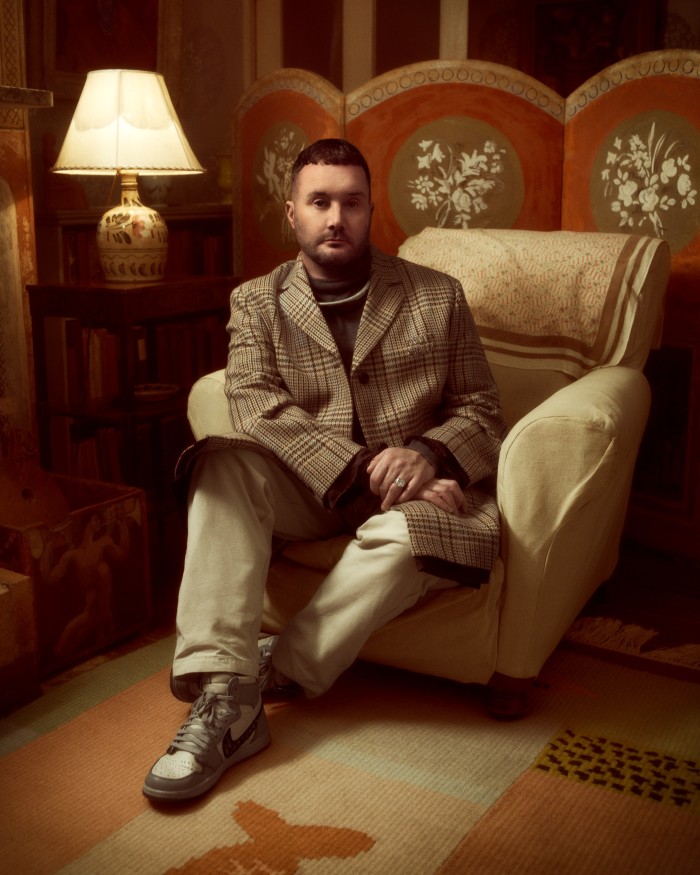
Jones doesn’t look like your typical antiquarian. He has a baby face but dresses like a geezer, and has a cool composure that could read as shyness, or perhaps a bit aloof. Over the course of several meetings – in London, Sussex, Paris and Cairo – he wears a blue shirt by Miu Miu, a heavy conker-coloured leather Miu Miu jacket and bib-front cream-coloured trousers by a Japanese brand called Goodenough that he has been wearing since he was 19. He styles his watch like the Italian industrialist Gianni Agnelli, over his shirt cuffs, and wears one on each wrist. “That’s a ’70s Rolex Submariner with a Tiffany dial, and this is a Paul Newman Daytona 1968,” he says of his current favourites; the Daytona was a gift to himself after his first Fendi show. Around his neck, a pair of wraparound Oakley glasses glitter with encrusted diamonds. On his finger sits a gigantic diamond globule given to him by a fan. “It’s just shiny stuff,” he says of his penchant for flashy statements. “But I think everyone loves that.”
Jones loves stuff. Loves buying it. Loves giving it away as presents. Loves sharing it with other people. His munificence is all part of his astonishing success as one of the most influential designers in the industry – albeit one you might not know by name. A graduate of Central Saint Martins, where he studied menswear under Louise Wilson, he first garnered attention at his namesake label before being made creative director of Dunhill in 2008. In 2011 he was appointed style director of menswear at Louis Vuitton where he drove wild growth for the LVMH-owned behemoth through cult collaborations with Jake and Dinos Chapman and the streetwear giant Supreme. As artistic director of Dior Men since 2018, he has created similarly bold collections, seamlessly blending the atelier techniques of the maison with traditional tailoring and elevated casualwear.
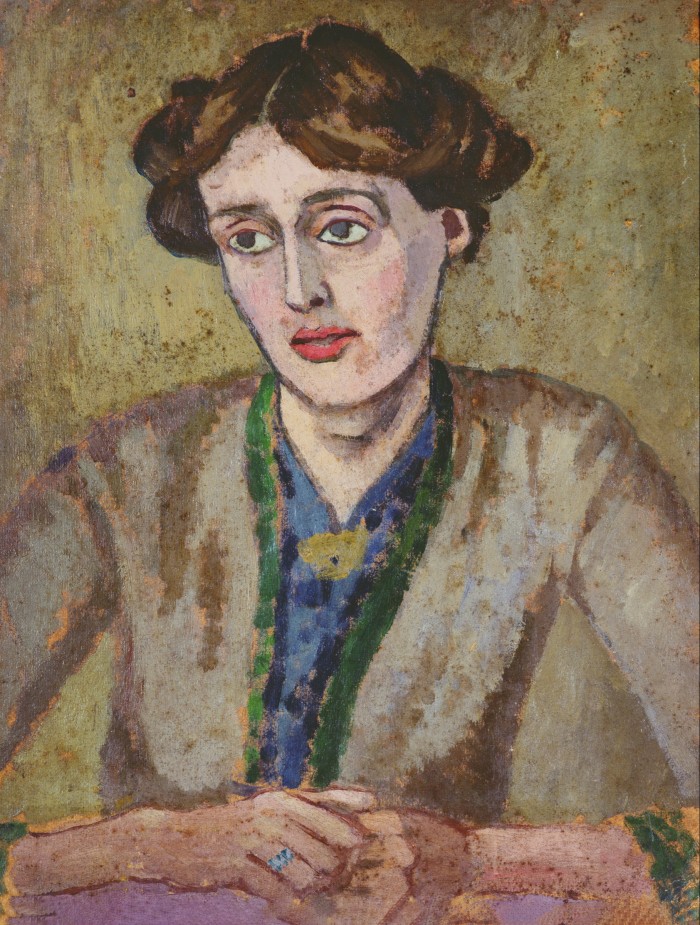
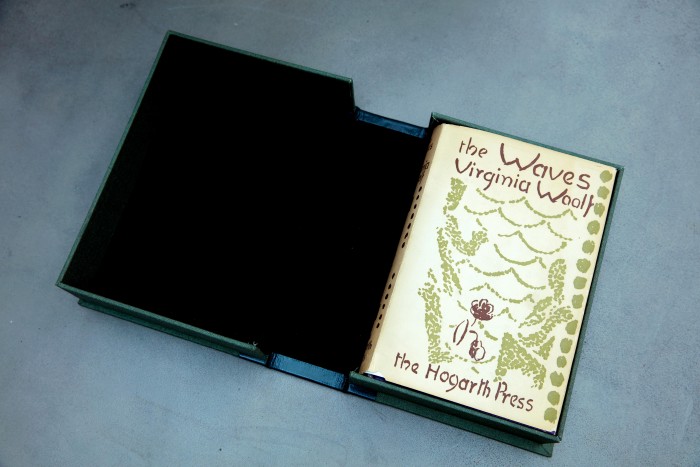
His tenure has been fruitful: a recent HSBC study estimated that sales at Christian Dior have quadrupled since 2018, surging 35 per cent from €6.5bn in 2021 to €8.8bn last year alone. “Kim Jones masters the art of reinventing Dior’s priceless legacy while celebrating it,” says Pietro Beccari, the brand’s former chair and CEO. Beccari has since been replaced by Delphine Arnault, allowing Beccari to take on a bigger role at Louis Vuitton. “Kim draws inspiration from the archives and twists them magnificently into an ultra-contemporary spirit that merges elegance, practicality and haute couture.”
Jones pays close attention to the numbers, just as he uses coloured spreadsheets to keep track of items on his shelves. “My mother set up libraries in Africa,” he says of his love for order. “Plus I’m a Virgo with a rising sign of Virgo – just like Karl Lagerfeld.” Like Lagerfeld, he well understands his obligations. Unlike Lagerfeld, he’s not remotely comfortable being centre stage. When we last speak, Pharrell Williams has just been appointed creative director of menswear at Louis Vuitton. “I’m sure he will do very well for them; he’s an old friend,” he says of Williams, with whom he has started projects in the past. Although it cannot be lost on the designer that in bringing so many cultural influencers to the maison, he has himself been partly responsible for the shift towards celebrity – or non-fashion – fashion designers in recent years.
Jones himself prefers to remain a bit more under the radar. He keeps his private life elusive, and prefers not to discuss his romantic relationships. He’s very clear about the precarious position of even the most successful creatives. “I work for the customer,” he shrugs of his professional ethos. “And if the customer wants something, we’ll make it.”
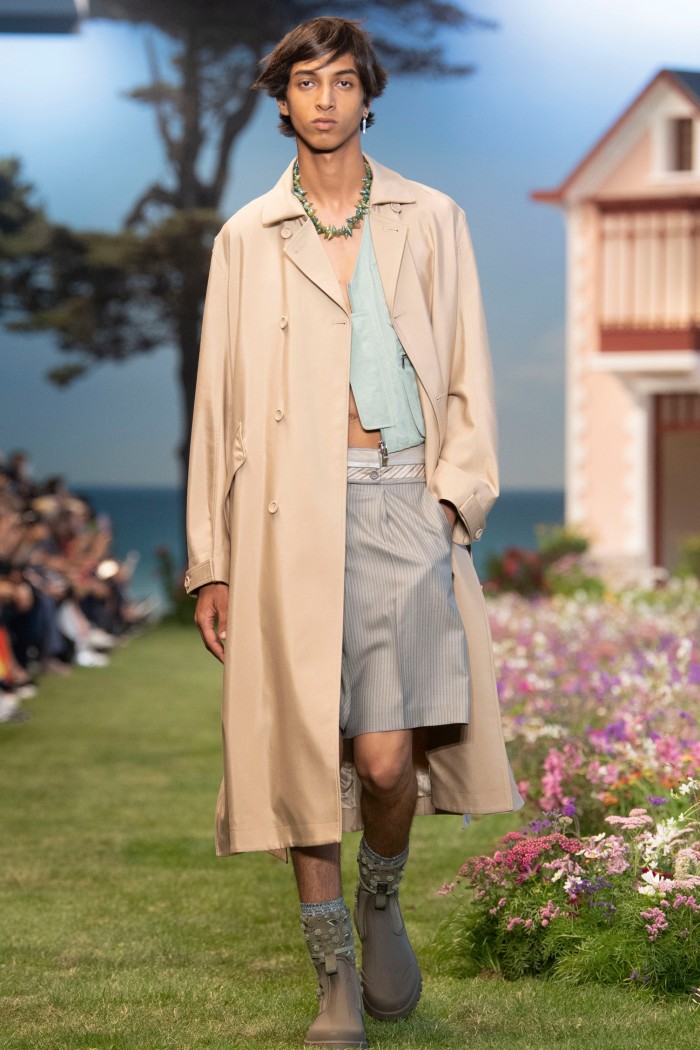
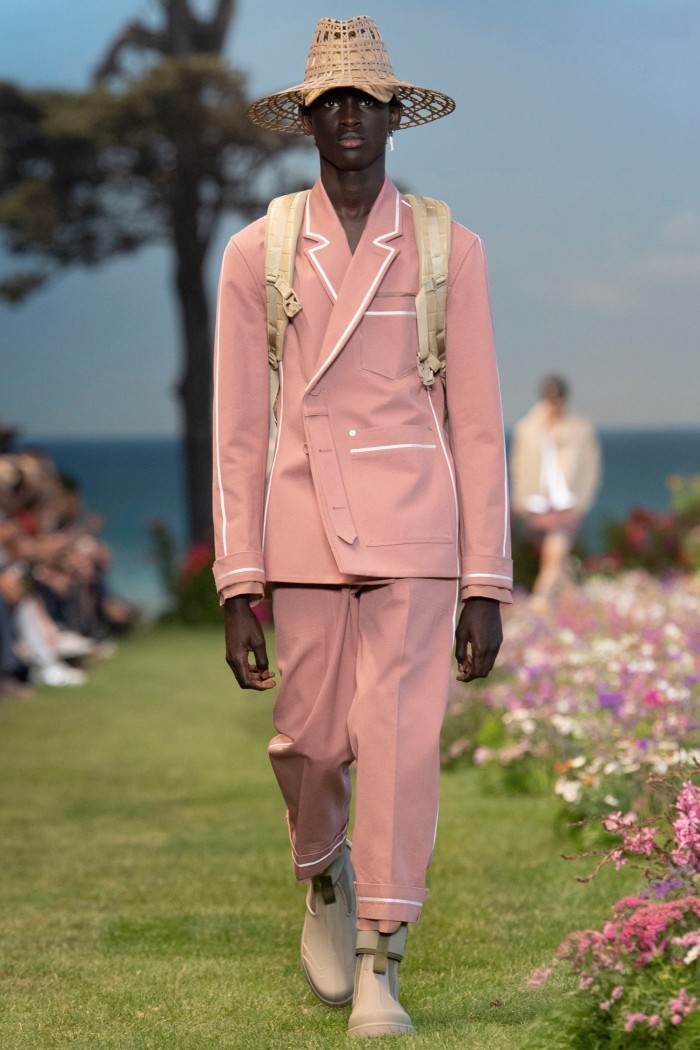
The Bloomsbury books are only a fraction of Jones’s extensive collection; several portraits by Roger Fry, plus a screen, and some Duncan Grants are hung around his London walls. There are also ceramics, jars and “approximately 25 pieces” of Omega furniture (made at the short-lived design workshop founded by Roger Fry). At one point he produces the most delicate of shell necklaces – one belonged to Woolf, the other to Vanessa Bell. All combined, it puts him in possession of one of the most extensive private Bloomsbury collections in the world.
He clearly has a massive income, and equally expensive taste. What has he been buying recently? “God, what? I’m trying to think… A copy of Two Stories, by Leonard and Virginia Woolf… There’s also a Lucian Freud portrait of a pigeon [Jones’s enthusiasms are by no means Bloomsbury exclusive]. A Duncan Grant and a Vanessa Bell. But I’m giving them to the Trust.”
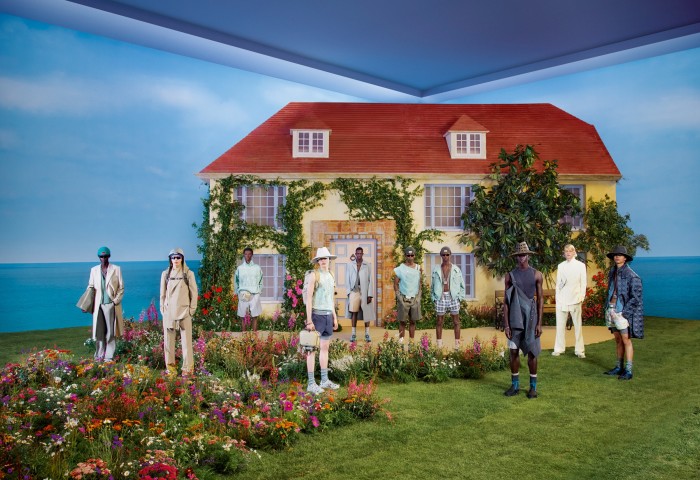
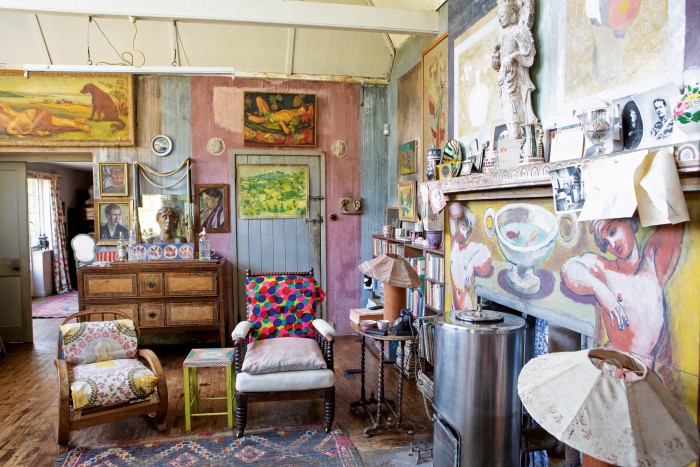
The Trust is the Charleston Trust, the East Sussex seat of the Bloomsbury Group, now a museum and exhibition space, with which Jones regularly works. Leased in 1916 by Vanessa Bell and her friend and lover Duncan Grant, and Grant’s partner David Garnett, Charleston was a small farm a few miles outside Lewes that was quickly reconvened as a progressive artistic hub. It was also the scene of torrid sexual romances and a fulcrum for countercultural thought. Vanessa and Duncan painted every stick of it in the distinctive palette that has since become the signature of decorative bohemianism and regular visitors included the writer Lytton Strachey, art critic Clive Bell (husband of Vanessa) and the economist John Maynard Keynes.
Jones first discovered Charleston farmhouse as a teenager while spending weekends with his step-family in Lewes. It made a fast impression; he still has the lino cut of swimmers that he recreated having seen it displayed on one of the farm’s doors. The building has since loomed large in Jones’s imagination. He shot a campaign for his first couture collection at Fendi at the farmhouse, and rebuilt a scaled-down model, including garden, for his SS23 menswear show at Dior. “That period, in between the wars, where the world was either slumping or going crazy and shifting away from the values of what had been before,” he explains. “Imagine these people born in Victorian-era England, deciding that this is not how we want to live. That’s why I think I like the Bloomsbury Group so much. They were reacting against their times.”
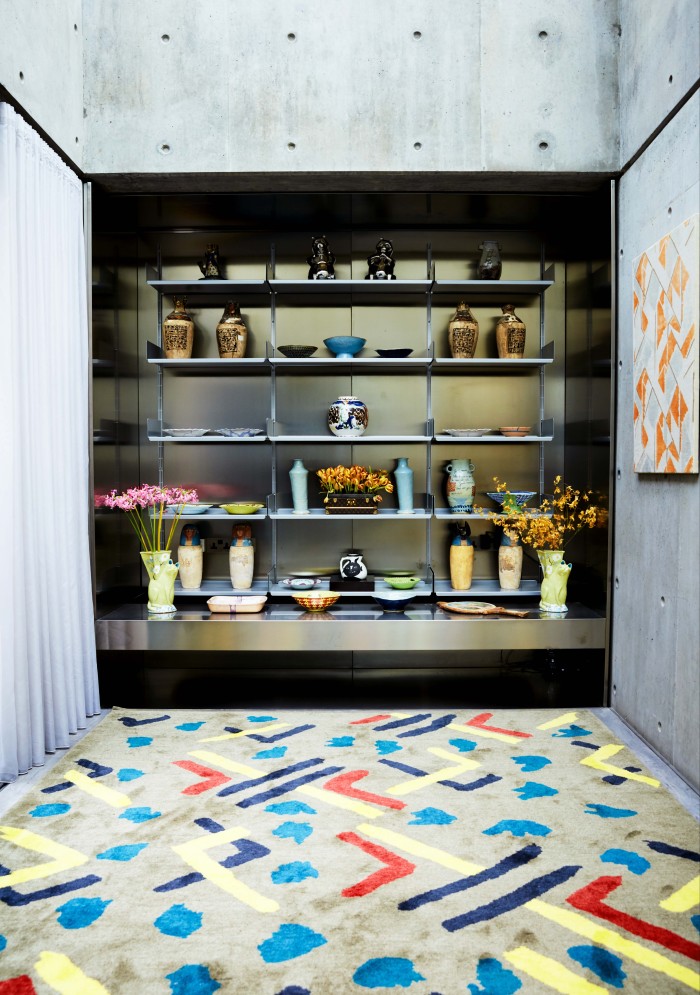
An armchair psychologist might have further thoughts on Jones’s particular obsession. The son of a British hydro-geologist, his father, and a Danish librarian, Jones enjoyed a peripatetic, disrupted childhood that took the family to Ecuador, Ethiopia, Kenya, Tanzania, Botswana and the Caribbean. His parents separated when he was five, and he resettled in London for his senior schooling, but his mother was ill for much of his early adolescence and died when he was 17. His discovery of Charleston coincided with that formative period; his interest in fashion was also awakened at that time. “At home I was the carer and looker-after,” he remembers, “because Mum was never very well. And so [Sussex] was like freedom. I became curious and saw a lot of the world from a very early age.”
In future, Jones plans to move his hoard of Bloomsbury books to Rodmell, the village in East Sussex where Virginia Woolf lived in Monk’s House. He has bought a handsome property in the village that he is furnishing in a Bloomsbury-modern style. On a tour around the house one winter morning he points out numerous Vanessa Bell paintings, a chaise covered in fabric designed by Cecil Beaton and a guest suite with a tiny bed that once belonged to Maynard Keynes, from Heal’s. The house is buzzing with activity; Jones’s good friend Nathaniel Hepburn, the director and chief executive of Charleston, is chatting to the various Dior representatives, friends and housekeepers assembled while the atmosphere is punctuated with the grunts and snuffles of Lolita, a friendly Mexican rescue mutt. Everywhere features delicious points of interest. Everyone is in a buoyant mood. At one point he waves a blue-and-white painted teapot – a birthday present to Woolf from Vanessa Bell – but doesn’t use it to make tea.
Jones describes himself as being an “organised hoarder”, admitting that his acquisitional obsessions may stem from the fact he was only allowed “to bring three toys” each time he moved country as a child. Like many children, he first started collecting Star Wars figures: the pristine unopened boxes still line the office bookshelves in his London home. Later, he got into fashion, buying selvedge jeans and early Vivienne Westwood. He keeps all of it, and claims to have only ever sold one item: a parachute shirt, by Westwood, to fund an early collection from his namesake label in 2003.
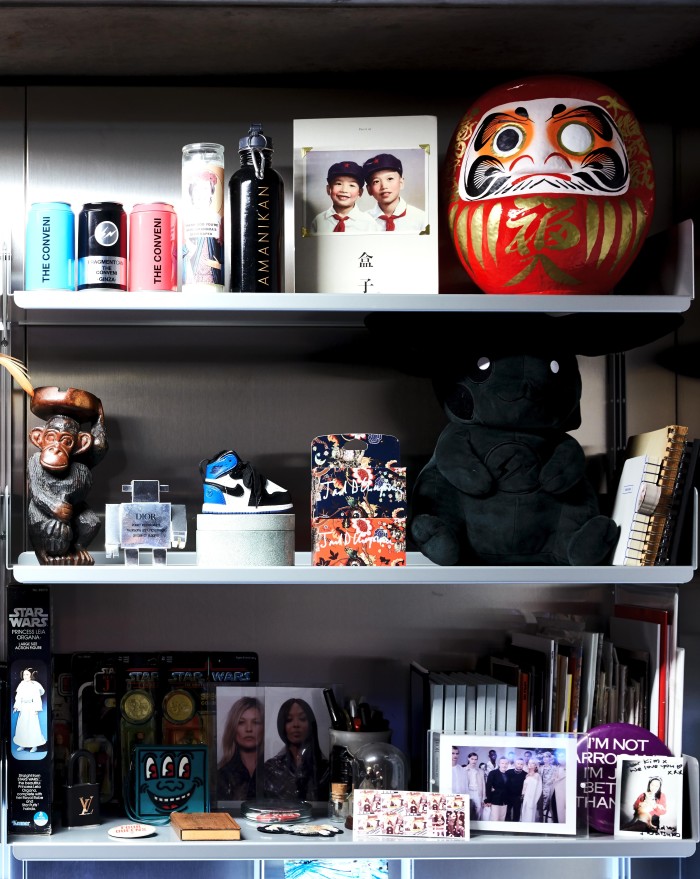
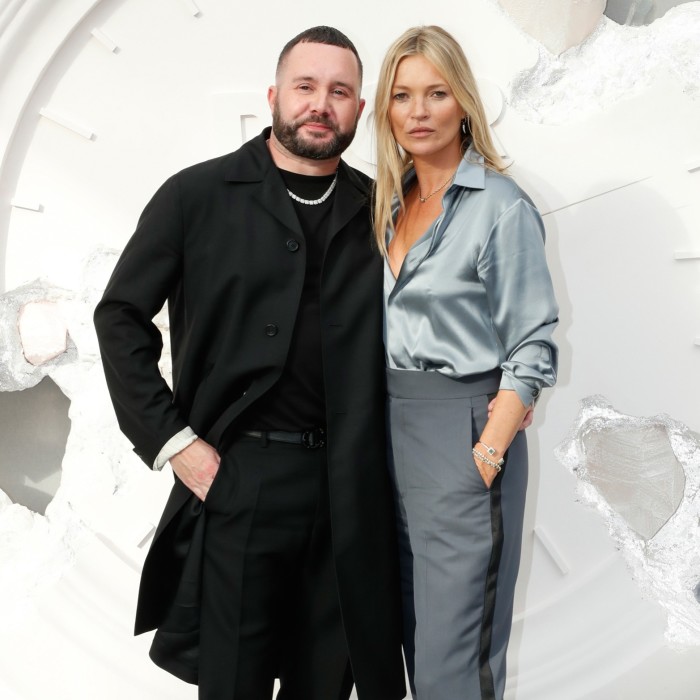
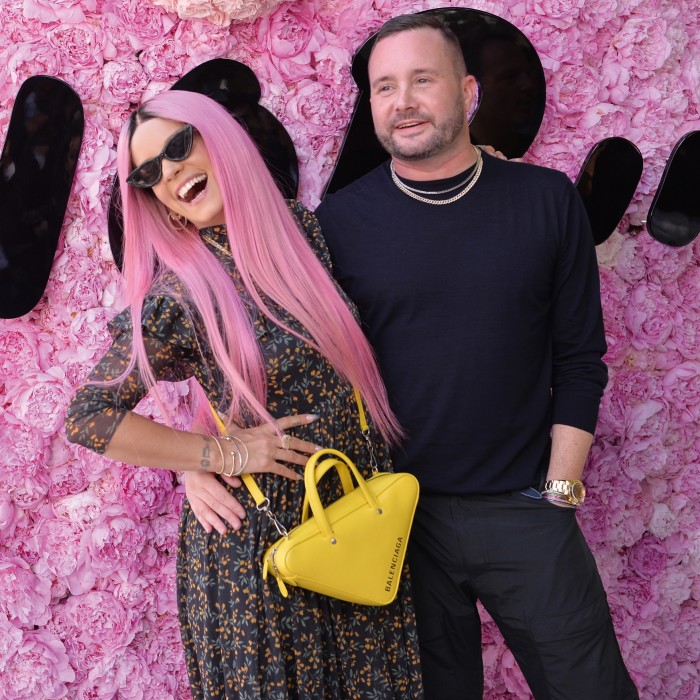
The Bloomsbury passion runs deeper. Almost part of his branding at this moment, it subtly informs the romantic but rebellious aesthetic he has steered at Dior. And, just as the Bloomsbury Group orbited around key players, Jones is the centrifugal force around his own creative gang. Kate Moss is a stalwart figure of the inner circle, alongside Naomi Campbell, Demi Moore and Lily Allen, who slept on his sofa when she was still a precocious teen. Yoon Ahn (who does the Dior costume jewellery) Hiroshi Fujiwara (often described as the godfather of modern streetwear), Shawn Stussy and Tremaine Emory (the Denim Tears founder and current creative director of Supreme) were all friends for years before they worked together. Jones’s breathtaking resort show in front of the pyramids of Giza last December was accompanied by a live performance by the Max Richter Orchestra; for the recent AW23 show in Paris in January, he worked with the director Baillie Walsh of Abba Voyage.
Gwendoline Christie, the statuesque Game of Thrones actress, first met Jones around 1998 when he was studying at Central Saint Martins: she performed a reading of The Waste Land at his most recent menswear show. “We are firmly bonded over our shared love of all things Bloomsbury,” she says. “We also share a love of literature and [of] the books themselves. I find Kim’s library so romantic; it’s impressive but it’s just so personal – it’s a beautiful representation of Kim’s rich inner world.”
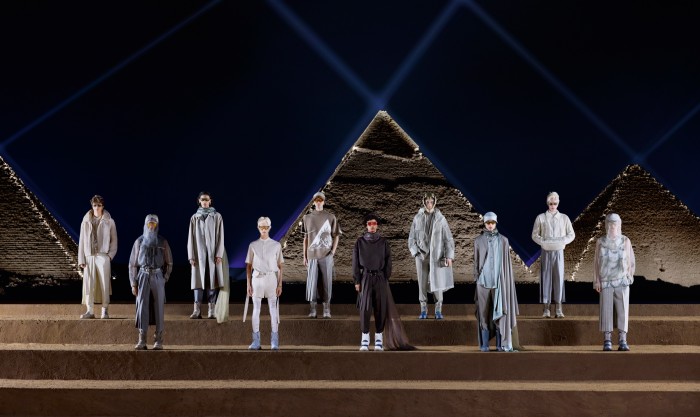
Ask about his starry associations, however, and Jones likes to keep it humble: they’re just people whom he’s “always” known. He likes “washing dishes” and “doing the potatoes” and “sitting in the corner” – albeit in the corner “chatting with [Kate Moss’s] mum”. Christie describes him as “one of the most hilarious and fun people you could hope to be around with an outrageous zest for life”. When he can, he likes to take friends on safari. But he also loves to get them round a craft table making things with Fimo clay.
One of Jones’s most visible signatures as a designer has been in his work with contemporary artists. His first show for Dior was set before a giant KAWS sculpture adorned with thousands of pink roses. He has also worked with Raymond Pettibon, Amoako Boafo, Daniel Arsham and Peter Doig.
“I think Kim’s vision for Dior is about engaging artists and looking at possibilities of creation through their lens,” says Arsham, who worked on the SS20 show. “So we used themes that were present in my work [such as erosion, gradient colour palettes and crystal material] and filtered them through the possibilities of wearable art. I worked on everything with Kim, from jewellery to bags, all the clothing, accessories, as well as on the stage set. It was a pretty magical experience for me and the single largest engagement that I’ve had with fashion thus far.”
Beccari also notes Jones’s talent for “forging alliances with other artists” – just as Christian Dior, a former gallerist, did when starting up the house. Asked about what makes Jones so successful, Beccari cites “his open-mindedness and sense of dialogue. His ability to listen and to understand the desires of clients. And his ultra-responsiveness makes him the best ally on both strategic and creative fronts”.
Lucy Beeden has been Jones’s “right-hand woman” for almost 18 years. “Kim is a fantastically generous boss,” she says. “He has this incredibly open culture that breeds creativity because he lets everyone express themselves without fear. He spends time talking to young people, and he really listens to people talking about what they want to wear. The only things that really frustrate him are incompetence and people who don’t listen. He knows what he wants, so you’d better not make him repeat himself!”
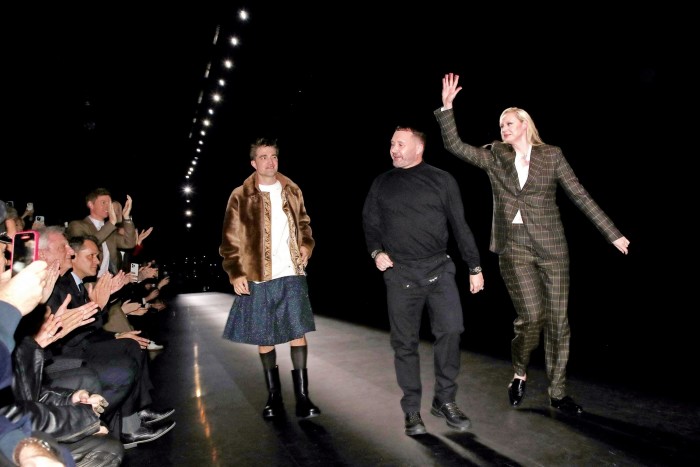
Jones’s Dior may be elegant, modern and romantic, but as a hired name within a big corporation he is pragmatic too. “What I do is meant to give people some optimism, really. There’s not ever going to be a political discussion in my work,” he says. “My role is to think about Dior as the past [the archive], the present, and what will be the future. My job is to consider what you’re bringing to keep it going, and what I’m doing to make it relevant.”
A man of many interests, Jones is in a permanent state of doing. In addition to the challenges of making now some 22 collections a year, and his Bloomsbury project, he travels constantly and does “lots of conservation projects on the side. Charleston’s one of my big passions, but conservation is another”. One project, the Douc Langur Foundation, supports endangered monkey colonies in Vietnam, Cambodia and Laos.
At this point in his Bloomsbury collection there aren’t so many gaps left. Can he feel his attention shifting to other things? “I can be quite completist and then I move on,” he says of his new passions. Lately, he’s become “quite Francis Bacon obsessed”. No surprise that Jones is drawn to another darkly romantic cultural icon, not to mention one of the most expensive artists on the market today. “I know. It’s silly,” he says of his aspirations. “But I’ve been collecting the preliminary works. Bacon is dark, but it’s also interesting. Just the fact that he started as an interior designer, and then through his work and association with [the abstract artist] Roy De Maistre… I’ve got a painting, which is gorgeous, it’s almost like you couldn’t tell who did what. And so there’s an interest in the works on paper, the bits of fragments, Screaming Popes… Carpets. And then the more I think about the house in Sussex, I’m thinking about furniture as well.”
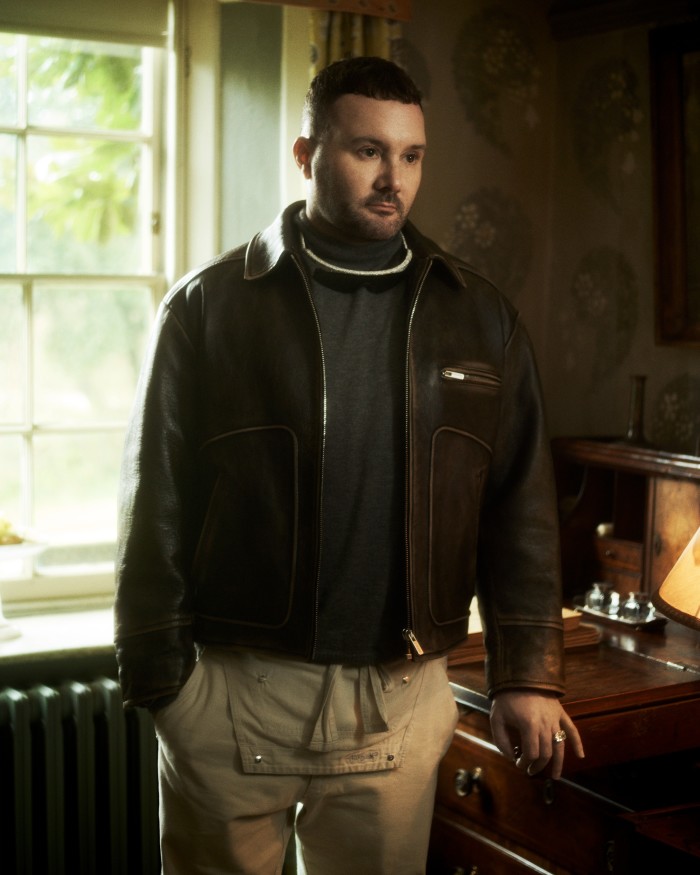
Ultimately, Jones wants to design a permanent library in the old school building in Rodmell that will house his book collection and provide another point of interest for those people doing the Bloomsbury tour. “I have quite a big collection of things now, and they’re quite important things to other people,” he says. “That’s why I bought the schoolhouse. I thought if you go to see Virginia Woolf’s house, surely you’d want to go and see the books as well?”
For a man who barely stays in one place for a minute, it seems incredible to imagine that Jones is putting down some roots. But his father’s death, followed by his uncle’s, has made him more circumspect. Both died without a will, and sorting out the estates of each has galvanised Jones’s determination not to leave his own affairs in any kind of mess. “It’s not about being morbid,” he argues, more that things are “kept together” when he’s gone.
“You get to a point in your life where you’re homing in on your childhood, almost,” Jones reflects. He is sitting in the living room in Rodmell on a pale sofa; a perfect cream carpet lines the room beneath his feet. “And the one thing for me is, I always wanted to feel secure.” By filling the house with Bloomsbury portraits, pots and first editions, he now possesses those things that gave him an early taste of freedom, but also creative opportunity and the confidence that he might do just as he pleased. Home is somewhere he can play with the books without putting any gloves on; he can fill that teapot and get Kate Moss to play with clay. More importantly, home – whether in London, Paris, Rome or in Sussex – is where no one will ever put an upper limit on his toys.
Comments